Threaded Valve Connections
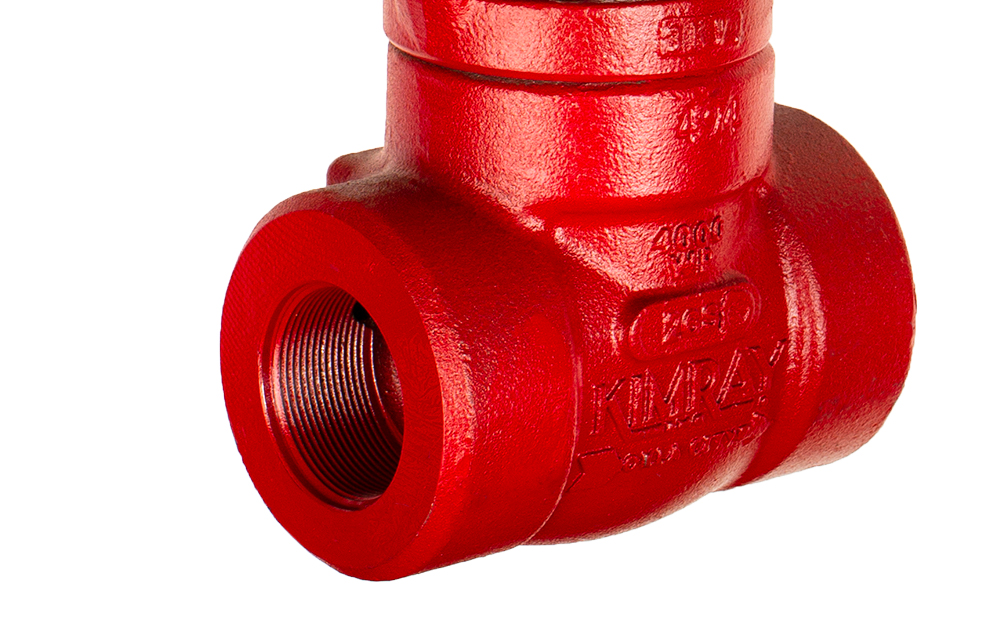
A threaded valve is secured to piping by threads. It may also be called a screwed-end valve or NPT, which stands for National Pipe Thread. NPT connections are tapered, so as you thread your valve onto the pipe, the connection between valve and pipe gets tighter.
What is the Difference Between NPT and NPS Valve Connection Types?
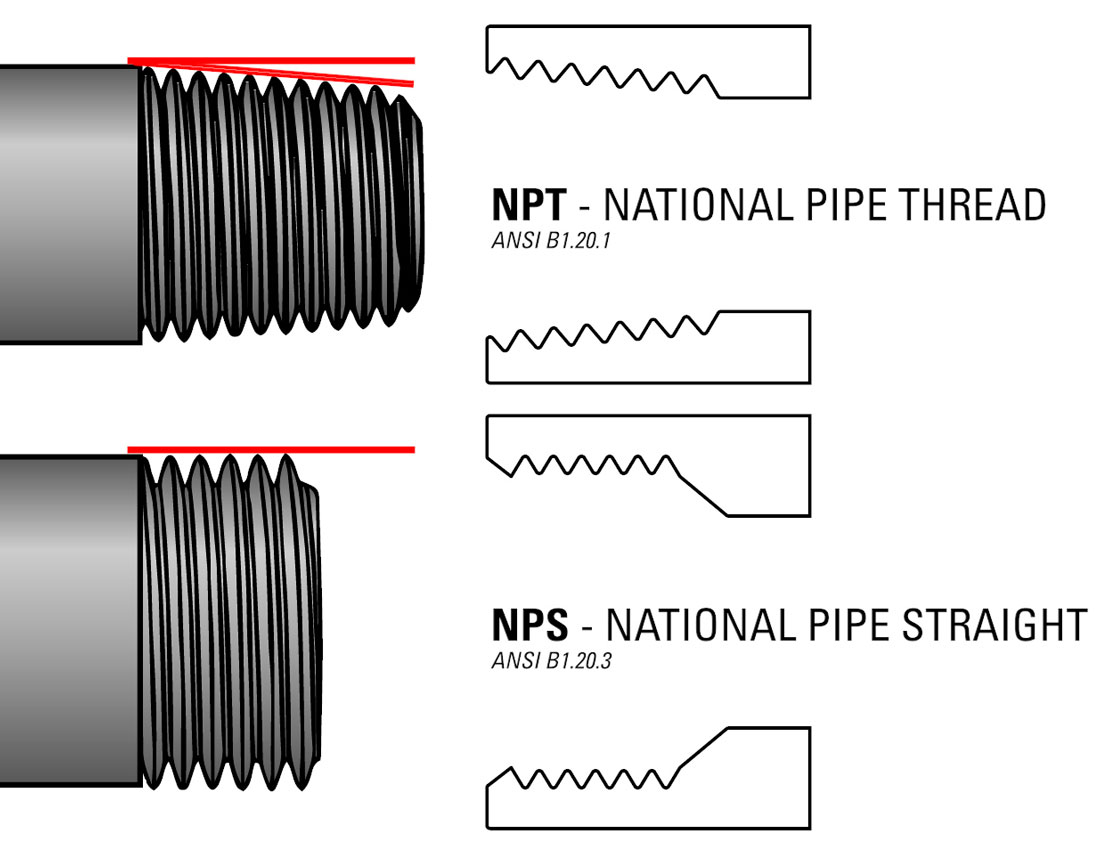
All Kimray threaded valves are NPT, but NPS, or National Pipe Straight, is another end connection type. Be aware that while NPT & NPS threads will engage and seem like they fit, they will not seal properly with each other and result in leaks.
Should I Use Thread Tape on my Threaded Valves?
Yes! When making the connection between pipe and valve, thread tape or pipe dope help make a good seal to ensure the process fluid stays inside the valve and piping where it belongs.
Something else to consider is that at some point you will likely have to change the valve or piping.
Over time threads tend to gall and stick together, especially if you’re using stainless-steel threads.
When that time comes, you will be glad you used thread tape, because it resists this metal-to-metal sticking and makes it it much easier to break the connection.
Flanged Valve Connections
A flange valve connection is a type of connection that uses a gasket between the flanges of a valve and pipe to seal the joint. It is secured with bolts, and if installed correctly, flange connections create a fluid-tight seal.
These connections are straightforward and make it easy to install and remove valve from from any application.
Producers typically use flange valve connections on valves 3" and larger.
What is a Raised Face Flange Valve Connection?
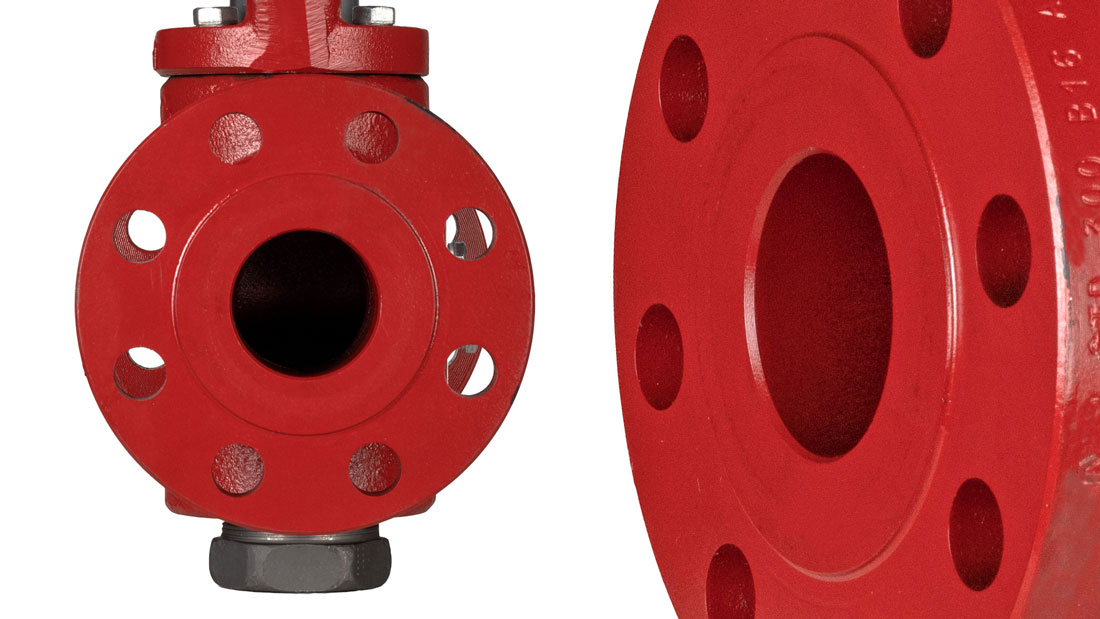
Kimray utilizes two categories of flanged valves—raised face (RF) and ring-type Joint (RTJ).
On raised face flanged valves, the gasket surface is raised above the bolting circle face.
This flange face is the most common type in the oil and gas industry and is available in all pressure classes and in most pressure and temperature ratings. This connection uses a semi- or non-metallic gasket.
What is a Ring-Type Joint Flange Valve Connection?
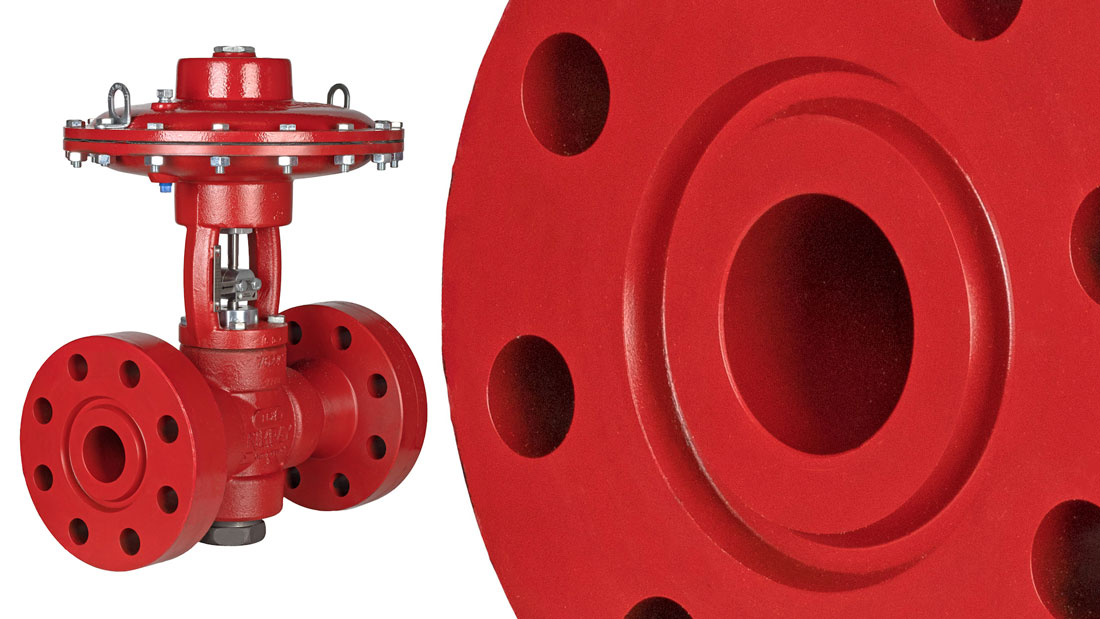
A ring-type joint flanged valve will have a similar raised gasket face but also with a ring groove machined into the face for a steel or hard metal ring gasket. RTJ flanges are typically used for more severe applications with very high pressures, and/or high temperature systems.
Both flange faces are secured with bolts, and if installed correctly they create a fluid-tight seal. Flanged connections are straightforward and make it easy to install and remove your valve from any application.
All Kimray valves with flanged connections are either RF or RTJ. However, there are other flange faces such as flat face flange (FF), lap joint flange, male-and-female flange (M&F), and tongue-and-groove flange (T&G).
How are Flanged Valves Manufactured?
The connection surfaces on flanged valves have a serration to them that is important for holding a gasket in place while the valve is connected to piping and installed, thus minimizing the risk of leakage.
Until recently, Kimray painted this surface along with the rest of the valve body, and customers had to use a wire brush to clean the paint off the connection surface before installing.
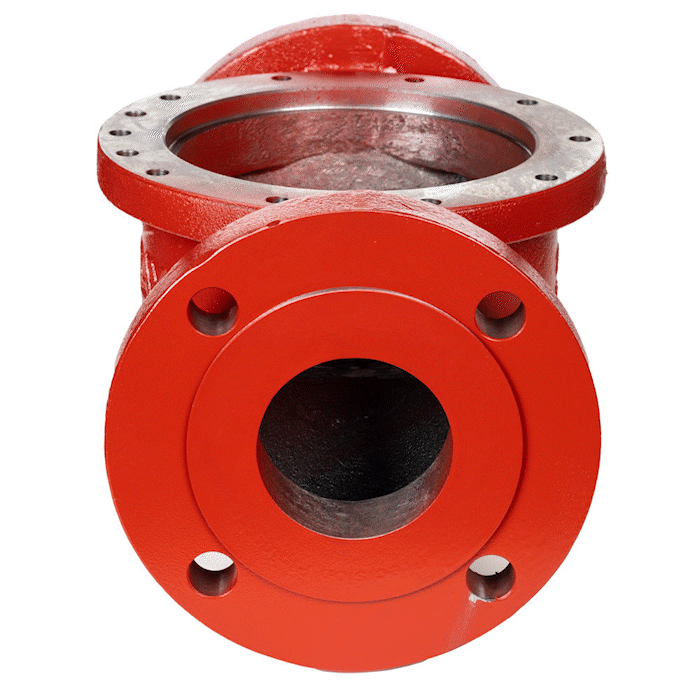
The new nylon adhesive rings add value by covering that connection before the valve is painted. Customer can now simply peel off the adhesive ring and install the product.
The adhesive also comes with a VCI anti-corrosion additive that will provide additional protection for this serrated surface of the flanged valve.
How to Convert a Flanged Valve ANSI Rating to PSI
It is critical to know the rating of what pressure your valve is for before putting it in line. Using an unfamiliar valve can be dangerous for you, your coworkers, and anyone else who visits the site.
Flanged valve ratings are based on the ANSI Pressure Rating System. ANSI—which stands for American National Standards Institute—is the body that establishes the measurement standards in the United States.
Valves rated at different ANSI classes react differently as the pressure and/or temperature of the process fluid changes.
This chart below converts valve ANSI ratings to PSI:
| Class | Carbon Steel | Stainless Steel |
|---|---|---|
| 150 | 285 psi | 275 psi |
| 300 | 740 psi | 720 psi |
| 600 | 1480 psi | 1440 psi |
| 900 | 2200 psi | 2160 psi |
| 1500 | 3705 psi | 3600 psi |
Flanged vs Threaded Valve Connection Types
Should you use threaded or flange valve connection types?
It is usually the size of the valve and cost considerations that dictate this.
Producers typically use threaded valve connections on 1” and 2" valves because they are more cost-effective than flanged valves.
However, threaded valves must also be spun onto the pipe, and the weight of a 3" or larger valve makes this installation difficult.
Some producers use hoists to install larger NPT valves, but often they will choose to use flange connections if the valves are 3" or larger.








































